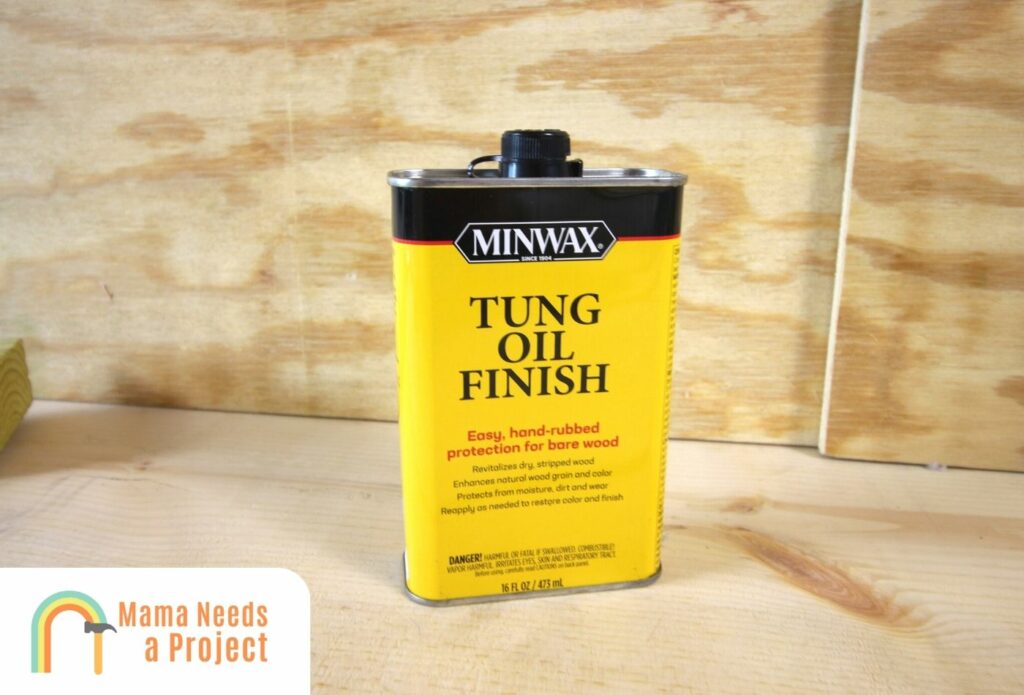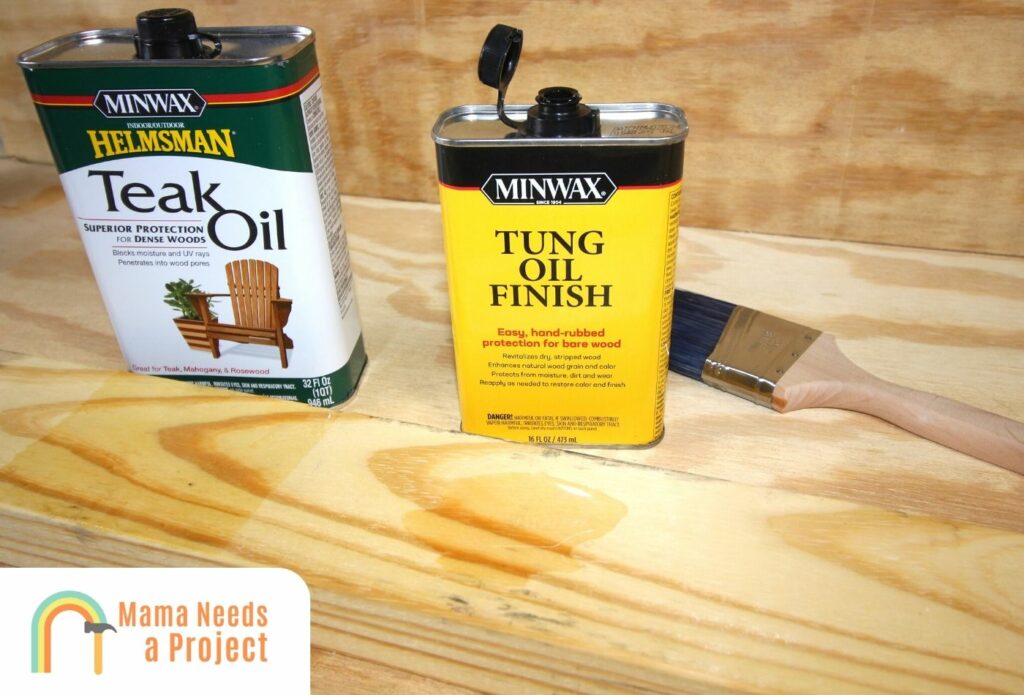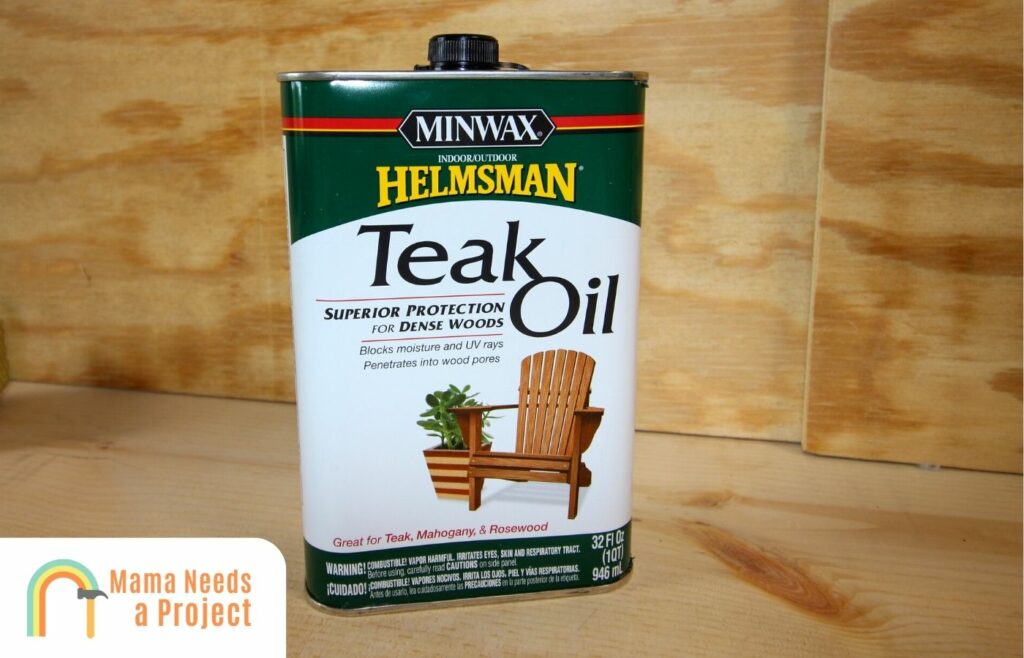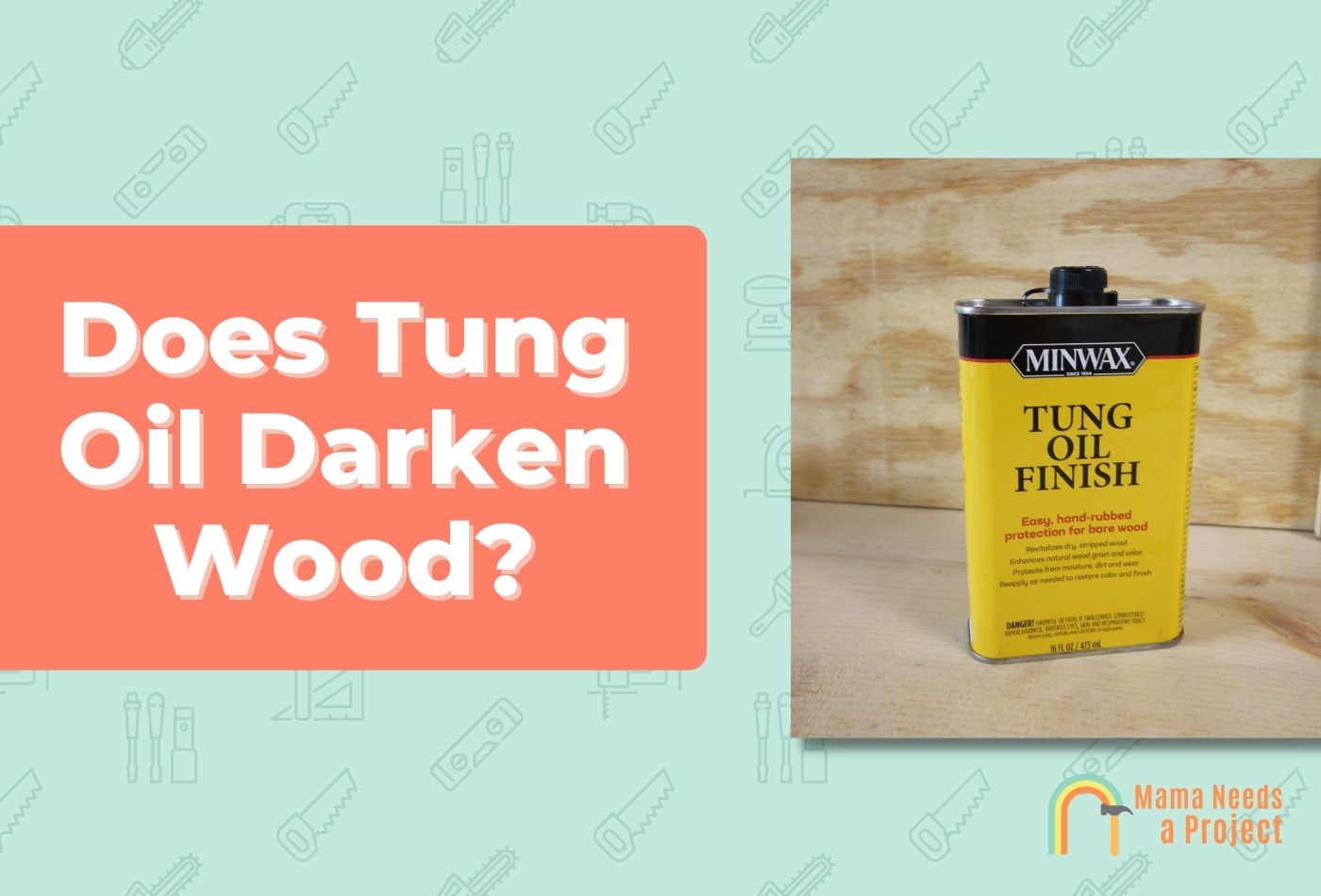Does Tung Oil Darken Wood? (What to Know!)
Pure tung oil, otherwise known as Chinese wood oil, is a popular, natural-drying oil that’s been used to finish wood furniture for centuries.
It has many attractive qualities to protect wood, but does tung oil darken wood? The short answer is no, but there are times when applying tung oil can make a surface look darker for a short period.
So to know why exactly tung oil doesn’t darken wood, and why it’s a preferred finish, read on!
- No, tung oil does not darken or yellow wood over time. However, if you apply too much tung oil, the surface will appear darker until the excess amount is removed.
- Certain hardwoods may look darker with tung oil, but this is only because the natural colors are being accentuated.
Does Tung Oil Darken Wood?
Tung oil may accentuate wood’s natural colors and the grain, but it doesn’t darken wood.
And unlike other oil-based finishes, tung oil doesn’t turn wood yellow or amber like some polyurethanes.
If you apply too many coats of tung oil, it may look like there’s a darker and richer finish, but that’s only because the excess oil hasn’t been removed—once it is the natural color of the wooden surface should return.
Finally, if you use tung oil on darker woods, like African blackwood or mahogany, there’s a chance the surface displays a dark finish, but that’s only because the oil is highlighting the wood’s natural beauty.
How to Use Tung Oil on Wood

1. Gather Materials
Before you put down any tung oil, you should gather all the materials you’ll need; this way you don’t have to stop working to find what you don’t have.
To apply tung oil coats correctly, you’ll need:
- Tung oil
- Mineral spirits
- Fine-grit sandpaper
- Cotton cloths (2-3)
- Tack cloth
- Vacuum
2. Prep Workpiece
First, you must clean the workpiece with mineral spirits. If you don’t want to use this strong cleaning agent, use warm, soapy water.
Once the workpiece has been cleaned from top to bottom, let it dry for at least 24 hours.
After the workpiece has had enough time to dry, sand it with fine-grit sandpaper to open up the wood pores; don’t take off too much material while sanding.
When you’re finished sanding, vacuum up the dust; caked-on dust should be removed with a clean tack cloth.
Now the workpiece is ready for the tung oil.
3. Apply Tung Oil

It’s best to apply the tung oil to your cloths first; this way you don’t apply too much on one spot of the workpiece.
You don’t need to soak the whole cloth in oil; a soaked area the size of your palm will do just fine.
Once the oily cloth is ready, begin to rub the tung oil into the workpiece. Immediately, you should see the wood grain better, and the workpiece’s color should start to pop.
You see, tung oil doesn’t darken wood—it does the exact opposite (at least momentarily).
Eventually, the brightness will fade since it’s not a glossy finish, but tung oil creates an accentuated finish that’ll last years if properly maintained.
4. Dry & Repeat
How much tung oil was applied in large part determines how long the workpiece needs to dry, but generally tung oil dries in 5-7 hours.
But it’ll need 5-7 days to fully cure, something that’s sometimes omitted from the labels of tung oil products.
If you need more help, check out the video below!
Benefits of Tung Oil
Accentuates Wood Grain & Natural Colors
Many woodworkers apply tung oil when they want to highlight the different grain patterns wood furniture can boast.
Tung oil also accentuates wood’s natural colors without being too glossy.
For fine furniture in particular, a tung oil finish is preferred over polyurethane and other thicker finishes because it neither yellows nor clouds over time.
And since it doesn’t alter wood surfaces, it works with both softwoods and hardwoods.
Usually, only one coat is needed for attractive results, but adding a second coat isn’t the end of the world; it’ll still be a matte finish.
Easy to Apply
Unlike oil-based stains and most wood finishes, tung oil is rubbed on, i.e. you don’t use a brush or a roller.
With a clean, cotton cloth for an applicator, applying tung oil is a breeze.
Brushes and rollers, on the other hand, would be prone to applying too much oil on the first coat—something a cloth applicator totally avoids.
It’s vital that you apply tung oil properly, otherwise it won’t be able to protect wood or highlight its many unique qualities.
Natural
Pure tung oil is a natural product, as its main ingredient is the oil which comes from the nuts of the tung tree.
Some tung oil finishes do, however, have chemical additives, and these are included mainly to strengthen the oil. But even these versions don’t darken wood.
Food-grade tung oil is 100% pure tung oil, and it’s often used to finish cutting boards, wooden bowls, cutlery, etc.
Durable
Multiple coats of tung oil can protect wood from a range of erosive elements, which explains why tung oil is often used to finish outdoor furniture.
Sure, it’s not as durable as oil-based polyurethane, but it’s water-resistant, pest-resistant, and heat-resistant without altering wood color, and even sunlight won’t alter its appearance.
How many coats are applied in large part determines durability, but even one coat can ensure a durable finish.
Affordable
Tung oil isn’t as expensive as other wood finishes, nor is it the cheapest product out there. The quality stuff is usually $13-$30, while the high-quality stuff can be upward of $35.
Obviously, if a tung oil product is designed for use on high-end, antique furniture, it’s going to cost more since it’s made with top-of-the-line components.
Tung Oil Alternatives
Linseed Oil
Linseed oil is another popular wood finish that’s made from ripened flax seeds that have been either warm- or cold-pressed.
Like tung oil, it can protect a wooden surface from most erosive elements, but it isn’t strong enough to prevent significant impact damage.
And unlike tung oil, boiled linseed oil isn’t food safe, since chemicals are added to improve its durability.
Raw linseed oil, on the other hand, isn’t as durable but it’s more accentuating.
Lastly, linseed oil is far more glossy than tung oil, and it can yellow a wood surface over time.
Danish Oil
Danish oil is often made with either tung oil or polymerized linseed oil, and it’s a hard-drying oil that accentuates wood’s qualities much like other wood oils.
The key difference between Danish oil and regular tung oil is the latter has a more muted finish while the former is usually more glossy.
Danish oil is also more durable than tung oil, but only by a little bit—it’s nowhere near as strong as polyurethane.
Teak Oil

Teak oil is a lot like tung oil, but it’s a more durable wood finish that only works well with certain wood species.
It’s food-safe since no volatile organic compounds (VOC) are used to make it, and it’s a little bit glossier than tung oil.
But frequent exposure to direct sunlight can darken teak oil and the surface it’s been applied to over time, or it’ll give the surface a yellowish/amber tint.
Walnut Oil
Walnut oil isn’t used as much as other natural wood finishes, but it’s a time-tested product that’s similar to tung oil in many respects.
However, it’s much glossier and takes longer to dry, and it’s not as durable.
But like tung oil, it soaks into wood fibers quite well.
Pine furniture looks great when finished with walnut oil, since this wood finish can accentuate pine’s unique, light colors far better than any other natural wood finish.
FAQs
Does tung oil change the color of the wood?
No, tung oil does not change the color of wood if applied properly. That said, if you go overboard when applying tung oil, the wood will look darker until the excess oil is removed. To ensure the finish doesn’t alter the wood’s color, only apply 1-2 coats of tung oil.
What color does tung oil make wood?
Unlike wood stain, paint, and certain oil-based wood finishes, tung oil’s color doesn’t change over time. Tung oil merely accentuates wood’s natural colors, whether they’re light or dark. Even direct sunlight and moisture exposure can’t change tung oil’s color once it’s fully cured.
Final Thoughts
To recap, tung oil doesn’t darken would. What it does do, however, is bring out the wood’s natural colors, and it also accentuates the grain.
If you apply too much tung oil, the wood may look darker, but it’ll go back to its normal shade once the excess oil has been removed.
Finally, whereas other finishes can tint a wood surface yellow or amber over time, tung oil doesn’t, which is why it’s a go-to finish for wood furniture.

